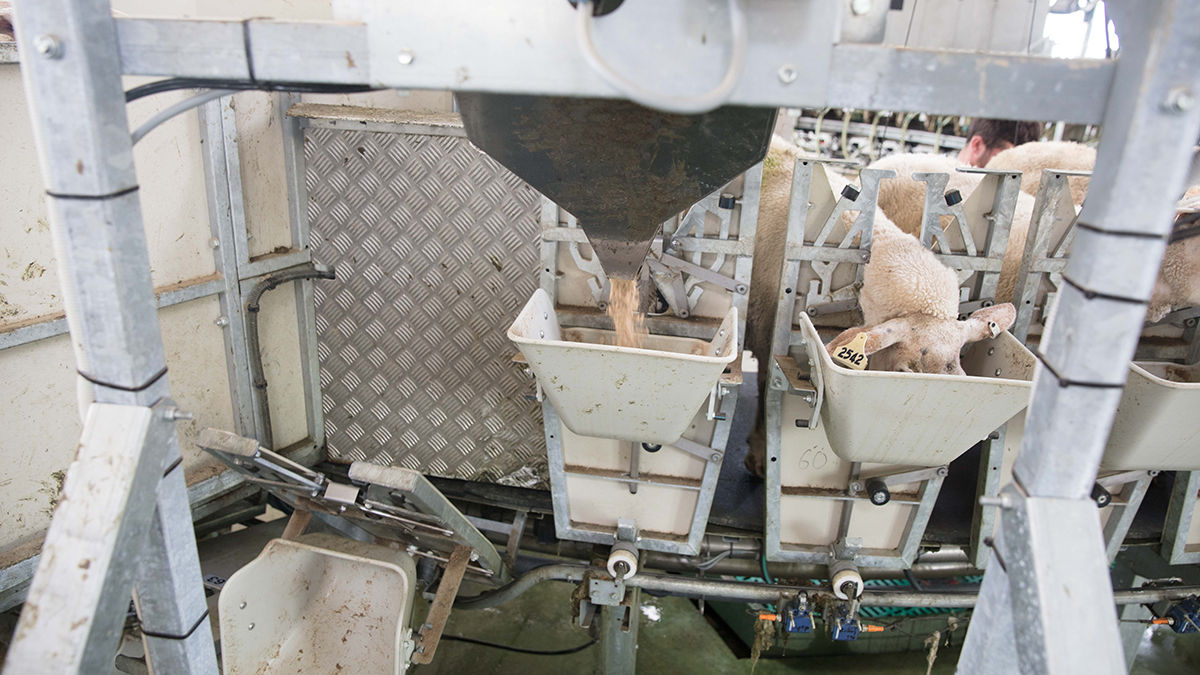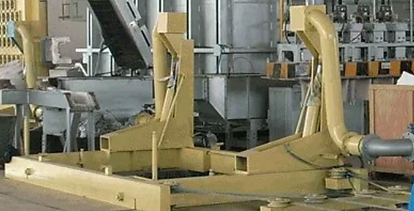DC BILLET CASTING MACHINE
The DC Billet Casting Machine will be used for the semi continuous casting of billets from molten aluminum and aluminum alloys in a vertical casting process. The DC Machine will be designed for heavy duty operation 24 hours per day and 365 days of the year and will incorporate latest state of the art internally guided hydraulic cylinder. The molten metal will be fed from the tilting furnace through a launder system to the distrubition basin located on the mould table. From the distribution basin, the molten metal flows through horizontal gates into the water cooled hot top moulds. Mathematical modelling of the fluid flow phenomena has proved to be a essential tool in designing the distribution basin to ensure similar inflow velocity pattern at all the hot top mould pouring gates to gurantee an equal distribution of liquid aluminum in every mould. Further the improved metal distribution achieves lower metal temperature difference between the moulds next to and farthest away from the furnace.
The lower openings of the moulds will be closed at the start of the cast by self centering starting heads attached to the starting head base.
When the metal has reached the required heights in the moulds the operator manually starts the platen decent. The aluminum the lower zone of the moulds, having solidified by indirect cooling, emerges from the moulds down into the pit and its temperature will be further reduced by direct water spray cooling.
After a cast has been terminated, the mould table will be raised. The billets can now be removed by overhead shop crane.
The casting pit built of reinforced concrete on site contains the water for the secondary direct cooling of the cast products. The pit water level is automatically controlled by level switches working in conjuction with sump pumps.
The casting machine would comprise a rise and fall type platen table and tilting type water distribution table, complete with hydraulics and water cooling systems.
The platen would be rigid steel fabrication, formed from heavy roled steel sections, reinforced by gusset plates and operated by a single centrally mounted hydraulic ram, fitted with a mounting collar at the base, set into the concrete foundations and a rigid coupling at the top fastened to the platen base frame.
A tilting type water cooled mould table formed from rolled sections, would be incorporated at the top of the machine, with the tilting mechanism operated by two hydraulic cylinders, connected to the sides of the table by swivel type brackets.
Tilting brackets complete with spherical bearings would be attached to the edge of the table and the water inlet would be fitted with a rotating joint. Cooling water would be distributed around the table by manifolds incorporating orifice assemblies, to ensure even cooling throughout the table.
Hydraulic Tilter
Hydraulic tilter performs the up and down movement of casting tables. It moves thanks to 2 hydraulic pistons.
Hydraulic pistons are connected to 2 cantilevered arms compatible with all casting tables. At the same time, the water line passes through this branch. Sealing is provided by the rotary seal elements.


